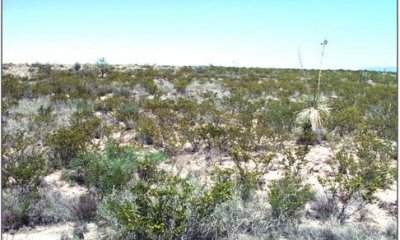
Gravelly, Dry Mixed Prairie
Scenario model
Current ecosystem state
Select a state
Management practices/drivers
Select a transition or restoration pathway
- Transition 1a More details
- Transition 1b More details
-
No transition or restoration pathway between the selected states has been described
Target ecosystem state
Select a state
Description
This state is characterized by the dominance of creosotebush. Other shrubs/sub-shrubs that typically increase due to overgrazing, drought and lack of fire include tarbush, prickly pear, and broom snakeweed. Black grama, blue grama, and sideoats, decline while sand muhly dropseeds and threeawns continue to increase.
Submodel
Mechanism
Climate, overgrazing, erosion and lack of fire are believed to be the key factors causing this transition. Periods of consistent above average winter precipitation favor shrub increase, while warm season grasses are favored when the winters are dry and summers are wet. 3 Extended periods of drought can severely reduce perennial grass cover, even in the absence of grazing.4 Loss of grass cover reduces competition between grasses and shrub seedlings, creating conditions that favor shrub expansion. Erosion is accelerated by the reduction in cover. Fire is believed to be a natural component of desert grasslands and historically may have limited the expansion of creosotebush and other non-sprouting species. A loss of grass cover as a fuel source will also reduce the ability to utilize fire as a management tool.
Key indicators of approach to transition:
Reduction in grass cover and increase in size and frequency of bare patches.
Increase in amount of creosotebush seedlings.
Formation of physical crusts—indicating loss of organic matter and decrease in soil aggregate stability and reduced infiltration.
Evidence of litter movement—indicating loss or redistribution of organic matter.
Evidence of accelerated erosion such as: formation of pedestals, increase in number and size of rills, formation of or active head cutting of gullies.
Mechanism
Brush management is necessary to remove resource competition from shrubs and increase grass cover. Reestablishing cover will also provide organic matter and fine fuels necessary to carry fire. Prescribed grazing will help ensure proper forage utilization and plant vigor, especially during times of drought. The amount of erosion and loss of soil resources may dictate the degree to which the system is capable of recovery.
Model keys
Briefcase
Add ecological sites and Major Land Resource Areas to your briefcase by clicking on the briefcase (![]() ) icon wherever it occurs. Drag and drop items to reorder. Cookies are used to store briefcase items between browsing sessions. Because of this, the number of items that can be added to your briefcase is limited, and briefcase items added on one device and browser cannot be accessed from another device or browser. Users who do not wish to place cookies on their devices should not use the briefcase tool. Briefcase cookies serve no other purpose than described here and are deleted whenever browsing history is cleared.
) icon wherever it occurs. Drag and drop items to reorder. Cookies are used to store briefcase items between browsing sessions. Because of this, the number of items that can be added to your briefcase is limited, and briefcase items added on one device and browser cannot be accessed from another device or browser. Users who do not wish to place cookies on their devices should not use the briefcase tool. Briefcase cookies serve no other purpose than described here and are deleted whenever browsing history is cleared.
Ecological sites
Major Land Resource Areas
The Ecosystem Dynamics Interpretive Tool is an information system framework developed by the USDA-ARS Jornada Experimental Range, USDA Natural Resources Conservation Service, and New Mexico State University.


